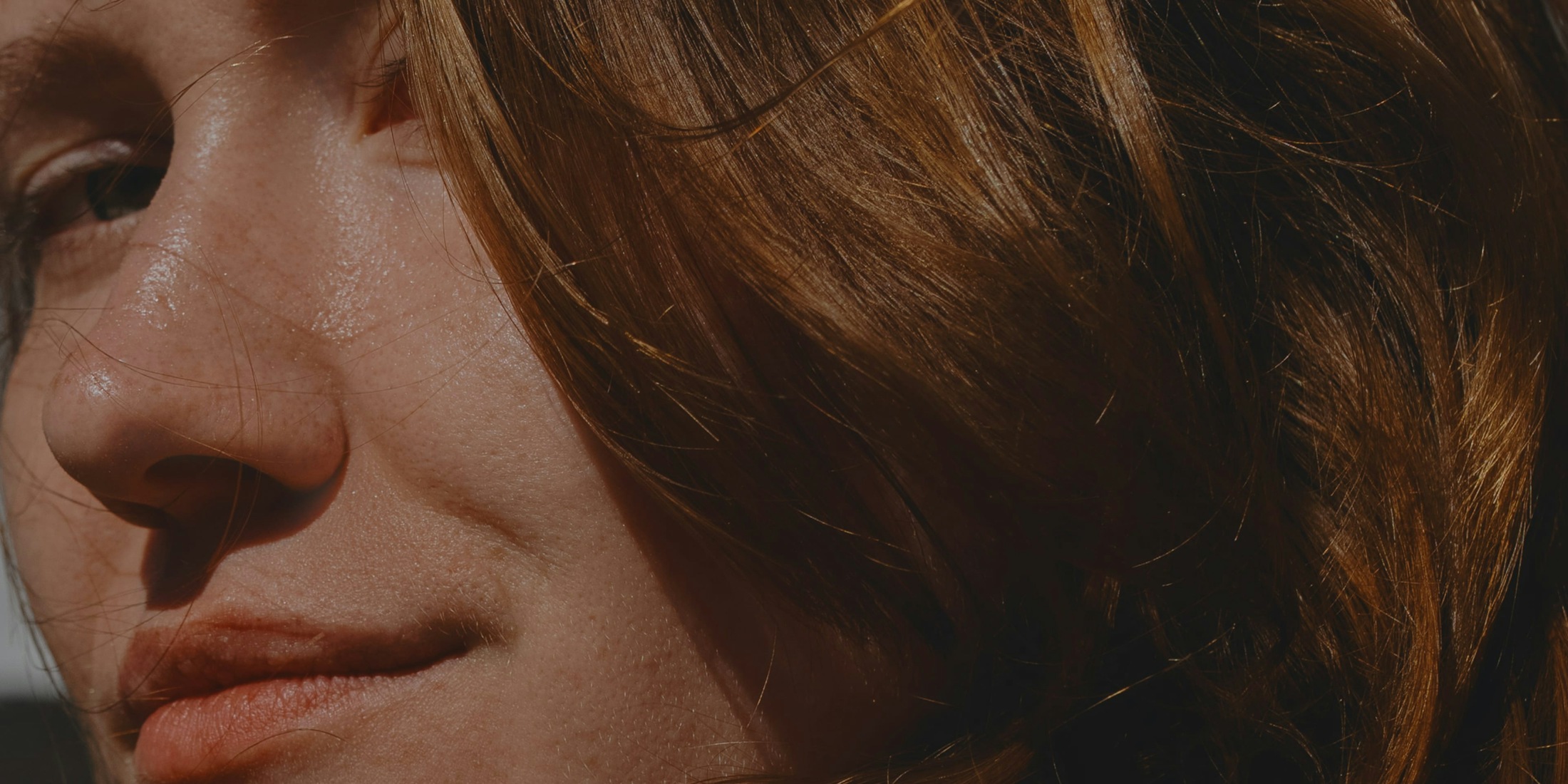
Chapter 72: Blepharoplasty
Eugene J. Kim, MD & Corey S. Maas, MD
Anatomy
Eyelid Surface
Eyelid skin is the thinnest in the body with relatively sparse subcutaneous fat. This allows free movement of the lid in closure and blinking. The upper eyelid skin is thinner than in the lower lid. The skin itself has many fine hairs as well as sebaceous and sweat glands. Healing occurs quickly in this area and scarring is usually minute.
The lid crease of the upper eyelid is formed by the insertion of the levator aponeurosis fibers into the skin and the orbicularis oculi muscle. It is approximately 8–12 mm superior to the lash line and lies just at the level of the upper edge of the tarsal plate. Medially and laterally, the crease is closer to the lid margin and has an arc shape across the lid. The Asian eye usually lacks this crease due to the lower insertion of the levator aponeurosis on the tarsus.
The lid fold describes the tissue above the lid crease and may extend throughout the length of the upper lid or it may be more localized. Excess tissue may develop in the aging face and sag over the lid crease, sometimes obscuring vision. A combination of excess skin, hypertrophied orbicularis oculi muscle, and herniated fat can be responsible for this process.
Orbicularis Oculi Muscle
The orbicularis oculi muscle provides the main mimetic function to the eyelid. It receives its innervation from the temporal and zygomatic branches of the facial nerve. The muscle is elliptical and divided into three bands (the pretarsal, preseptal, and preorbital), which attach to the bony orbit at the medial and lateral canthal tendons. The muscle can become hypertrophied over time and result in a full appearance of the eyelids.
Orbital Fat
Orbital fat cushions the globe and its associated structures, and its anterior limit is the orbital septum. In the upper eyelid, the fat separates the levator aponeurosis posteriorly and the orbital septum anteriorly. Here it is divided into two fat compartments: central and medial. In the lower lid there are three fat compartments: lateral, central, and medial (Figure 72–1).
Levator Palpebrae Superioris Muscle
The levator muscle acts to elevate the upper eyelid and has its origin in the periorbita posteriorly. The muscle runs above the superior rectus and fans out anteriorly to become the levator aponeurosis. Insertion occurs at the level of the tarsus, as previously described, forming the lid crease (Figure 72–2). Its innervation is by cranial nerve III (the oculomotor nerve).
Tarsal Plate
The tarsi are composed of fibrous tissue and provide the general shape and firmness to the eyelids. The upper and lower tarsi measure approximately 10 mm and 5 mm in height, respectively. Many meibomian glands are present in both tarsi and open into the ciliary margin.
Conjunctiva
This mucus membrane is attached to the tarsal plate and covers the tarsus and Muller muscle. Due to its firm tarsal attachment, the conjunctiva does not have to be sutured following incision. The gray line marks the border between the conjunctiva and skin. Histologically, there is columnar epithelium posteriorly and stratified squamous epithelium anteriorly. This landmark is frequently used in eyelid surgery.
Preoperative Assessment
A thorough history and physical, especially an ophthalmologic history, should be performed on every patient. Schirmer testing will help screen patients who are prone to dry eye postoperatively. The snap test allows for the determination of the laxity of the lower lid skin. The lower lid is pulled away from the globe and its snap back to the normal position is observed. If the lid is slow to snap back, lower lid laxity is a concern and the patient may be at risk for postoperative ectropion. A full-thickness shortening of the horizontal lid can help prevent this complication at the time of blepharoplasty.
Close attention to any degree of scleral show should be made; scleral show occurs when the lid margin does not reach the cornea. Also, any asymmetries should be documented and discussed with the patient. Patients with proptosis are poor candidates for blepharoplasty because of the risk of lagophthalmos and ectropion. In addition, blepharoplasty in patients found to have dry eye should be done very conservatively.
Aspirin should be discontinued at least 2 weeks before and after surgery to decrease the risk of bleeding. Preoperative photography is mandatory and involves the frontal view with eyes open, closed, and in upward gaze; a lateral view should also be taken. These photographs are reviewed with the patient and realistic goals and limitations are discussed.
Anesthesia
Local anesthesia with or without intravenous sedation is usually perfectly adequate for blepharoplasty. Injection with 1% lidocaine with 1:100,000 epinephrine is made in the surgical field just underneath the skin surface and superficial to the orbital septum.
Upper Blepharoplasty
The skin incision in upper blepharoplasty should follow the natural lid crease. This is measured approximately 8–12 mm above the ciliary margin along the upper edge of the tarsal plate. Laterally, the incision is carried toward the orbital rim and curves slightly superiorly. The exact extent is determined by the amount of excess tissue in that area. Medially, the incision extends to an area above the level of the medial canthus and never onto the nasal skin.
The superior skin incision is determined by the amount of skin to be excised. One method to determine this is by grasping the excess skin with forceps. Another method involves incising the lid crease only and then redraping the lid skin downward. This allows just enough skin to be excised. A simple elliptical skin excision may also need to be modified both laterally and medially by a Z-plasty or M-plasty closure.
The orbicularis oculi can be addressed following the skin excision or excised with the skin flap (Figure 72–3). Some surgeons advocate the excision of muscle varying from 2 mm in width to a width just 2-mm short of the skin excision. Regardless, care should be taken when tenting the muscle as the septum and levator can be accidentally cut. Hemostasis is obtained with the use of bipolar electrocautery.
Fat excision addresses the process of herniation. The orbital septum is carefully opened above the insertion of the levator aponeurosis. Gentle pressure on the globe can help identify the location of the relevant fat compartments prior to incision. The central and medial fat pads will herniate with globe pressure. They are excised anterior to the septum and meticulous attention is made to hemostasis (Figure 72–4). The central compartment may appear darker in color than the medial compartment. Care should be taken to avoid excessive resection of fat as it can create a hollowed eye look.
The incision is then closed initially via the principle of “halves” using a 6-0 nylon suture. It is completed with a 6-0 fast-absorbing gut suture in a running fashion.
Lower Blepharoplasty
Lower blepharoplasty can be approached via several techniques, including a skin flap, a skin-muscle flap, and a transconjunctival technique.
Skin Flap
The use of the skin flap technique is most appropriate in patients who have a significant excess of loose skin but evidence of good orbicularis oculi muscle tone. A subciliary incision is made just inferior to the lash line. Medially, it extends to the punctum and laterally to the canthus with a slight curve inferiorly (Figure 72–5). The plane of dissection is between the skin and the orbicularis muscle down to the level of the orbital rim. Gentle globe pressure will then allow localization of areas of fat herniation. The muscle and septum are incised and the fat delivered and excised from all three compartments. Meticulous hemostasis is achieved. The skin flap is then retracted superiorly and laterally. A thin strip of hypertrophied orbicularis muscle may need excision at this point, followed by closure of the muscle edges. Finally, the skin flap is trimmed underneath the lid margin, taking exquisite care not to place any tension on this area. The patient must open his or her mouth and look upward to insure excessive skin in not removed (Figure 72–6). A combination of interrupted and running sutures can then be used to close the incision.
Skin-Muscle Flap
The skin-muscle flap is developed in a plane between the orbital septum and the orbicularis muscle and is easier to develop than the skin flap. The incision is made as in the skin flap approach and dissection is carried through the orbicularis muscle and directed inferiorly toward the orbital rim. From there, the fat excision proceeds in the same fashion as with the skin flap. Excess skin and muscle is also trimmed in the same manner.
Transconjunctival Blepharoplasty
Transconjuctival blepharoplasty does not directly address the lid skin but, rather, only the orbital fat. However, advocates of this approach argue that the main problem is fat herniation rather than excess skin. By remaining postseptal, the orbital septum and muscle are left intact, which decreases the chance of lid retraction. In addition, external scarring is avoided. However, some surgeons believe that this approach is more likely to result in inadequate fat removal secondary to more limited exposure.
In performing a transconjunctival blepharoplasty, the conjunctiva is first anesthetized with topical tetracaine, followed by a direct injection of lidocaine with epinephrine. The globe is protected with a shield during the procedure. The technique itself utilizes an incision in the lower sulcus of the conjunctiva near the orbital rim (Figure 72–7). This can be made with electrocautery and the fat should be immediately encountered as it is located just under the surface. Gentle pressure delivers the fat and it is excised and cauterized in the usual fashion (Figure 72–8). As stated before, the incision does not need to be sutured close secondary to the tight adherence of the conjunctiva to the tarsal plate. If there is some mild redundant skin, some surgeons advocate the use of a CO 2 laser to tighten the skin in conjunction with the transconjunctival blepharoplasty.
Postoperative Care
Antibiotic ointment is applied to the incisions. Ice packs or cool compresses are applied to decrease edema and ecchymosis. Pressure dressings are not necessary as they hinder the ability to assess the presence of bleeding or vision changes. Pain is usually minimal and many patients may require no medication at all. Instructions are given to return immediately if there is an onset of pain, bleeding, or visual disturbance. Patients are again reminded to refrain from aspirin or NSAID use. Sutures are removed in 3 or 4 days.
Complications
Loss of Vision
Isolated visual loss is the most serious complication of blepharoplasty and is fortunately a rare occurrence, with a reported rate of 0.04%. In the absence of intraorbital hemorrhage, the exact mechanism is unclear.
Retrobulbar hemorrhage is a surgical emergency. This increases the intraocular pressure and causes an ischemic optic neuropathy, the occlusion of the central retinal artery, or both. The onset of bleeding may often be related to postoperative vomiting or coughing. Clinically, the patient will have a rapid onset of pain and proptosis with associated eyelid ecchymosis. Return to the operating room is mandated with clot evacuation and control of any bleeding sites. Lateral canthotomy may also be necessary for immediate decompression. With a visual loss, the intravenous administration of mannitol and steroids is recommended to decrease intraocular pressure. A consultation with an ophthalmologist should also be made.
Ectropion
Ectropion is the most common complication of lower blepharoplasty. It occurs after excessive skin removal and is due to the rotation of the lid margin inferiorly with separation from the globe. It usually requires surgical correction either with horizontal lid shortening, muscle suspension, or full-thickness skin grafting.
Milia
The development of milia is the most common complication of upper blepharoplasty. This can easily be addressed by “unroofing” the lesions with a needle in the office.
Lagophthalmos
In the initial postoperative period, lagophthalmos is present in many patients secondary to lid edema. It may be permanent in patients with excessive skin resection or scarring. If lubrication, massage, and taping of the lid fail to correct the problem, surgical correction is necessary with a full-thickness skin graft.
Additional Complications
Some other complications of blepharoplasty are scleral show, lid asymmetry, ptosis, corneal injury, and dry eye. The incidence of all these complications can be minimized with careful surgical attention, a preoperative screening, and a detailed anatomic knowledge.
Becker DG, Kim S, Kallman JE. Aesthetic implications of surgical anatomy in blepharoplasty. Facial Plast Surg. 1999;15(3): 165. [PMID: 11816079] (Review of orbital anatomy with attention to pathologic changes.)
Castanares S. Anatomy for a blepharoplasty. Plast Reconstr Surg. 1974;53(5):587. [PMID: 4821211] (Classic anatomic description of orbital anatomy.)
Castro E, Foster JA. Upper lid blepharoplasty. Facial Plast Surg. 1999;15(3):173. [PMID: 11816080] (A comprehensive review of indications and techniques in upper-lid blepharoplasty.)
Gausas RE. Complications of blepharoplasty. Facial Plast Surg. 1999;15(3):243. [PMID: 11816087] (A good review and summary of complications and their management.)
Jacono AA, Moskowitz B. Transconjunctival versus transcutaneous approach in upper and lower blepharoplasty. Facial Plast Surg. 2001;17(1):21. [PMID: 11518974] (Comparison of these techniques and also adjunctive procedures with the transconjunctival approach.)
Jelks GW, Jelks EB. Preoperative evaluation of the blepharoplasty patient. Bypassing the pitfalls. Clin Plast Surg. 1993;20(2): 213. [PMID: 8485931] (Classic article by one of the masters of preoperative assessment.)
Kikkawa DO, Kim JW. Asian blepharoplasty. Int Ophthalmol Clin. 1997;37(3):193. [PMID: 9279651] (Review of techniques and anatomy unique to the Asian patient.)
Mahaffey PJ, Wallace AF. Blindness following cosmetic blepharoplasty – a review. Br J Plast Surg. 1986;39(2):213. [PMID: 3516289] (Review of this devastating complication and the appropriate management of the underlying causes.)
McKinney P, Byun M. The value of tear film breakup and Schirmer’s tests in preoperative blepharoplasty evaluation. Plast Reconstr Surg. 1999;104(2):566. [PMID: 10654706] (Emphasizes the role of other preoperative tests over Schirmer testing.)
Perkins SW, Dyer WK 2nd, Simo F. Transconjunctival approach to lower eyelid blepharoplasty. Experience, indications, and technique in 300 patients. Arch Otolaryngol Head Neck Surg. 1994;120(2):172. [PMID: 8297575] (A substantial retrospective review of this approach with attention to technique.)
Triana RJ Jr, Larrabee WF Jr. Lower eyelid blepharoplasty: the aging eyelid. Facial Plast Surg. 1999;15(3):203. [PMID: 11816083] (Discussion of the aging changes in the lower lid and techniques to address them.)
Wolfort FG, Vaughan TE, Wolfort SF, Nevarre DR. Retrobulbar hematoma and blepharoplasty. Plast Reconstr Surg. 1999; 104(7):2154. [PMID: 11149784] (An excellent review of the pathogenesis of retrobulbar hematoma and a management algorithm.)
Zarem HA, Resnick JI. Operative technique for transconjunctival lower blepharoplasty. Clin Plast Surg. 1992;19(2):351-356. [PMID: 1576780] (A classic paper describing the modern technique for transconjunctival blepharoplasty.)
Figure 72–1. The orbital fat is divided into the upper medial and central compartments, and the lower medial, central, and lateral compartments.
Figure 72–2. Coronal view of the orbit and its structures.
Figure 72–3. The extent of excision in upper blepharoplasty is demonstrated by the dotted line. (A) Skin and muscle are excised as one unit. (B) Skin is elevated first, followed by muscle excision.
Figure 72–4. Orbital fat is delivered and then carefully excised with the use of cautery.
Figure 72–5. Lower blepharoplasty incision.
Figure 72–6. An open mouth and upward gaze allows for the precise excision of lower lid skin.
Figure 72–7. Transconjunctival incision below the lower tarsus.
Figure 72–8. The excision of orbital fat in the transconjunctival approach.



